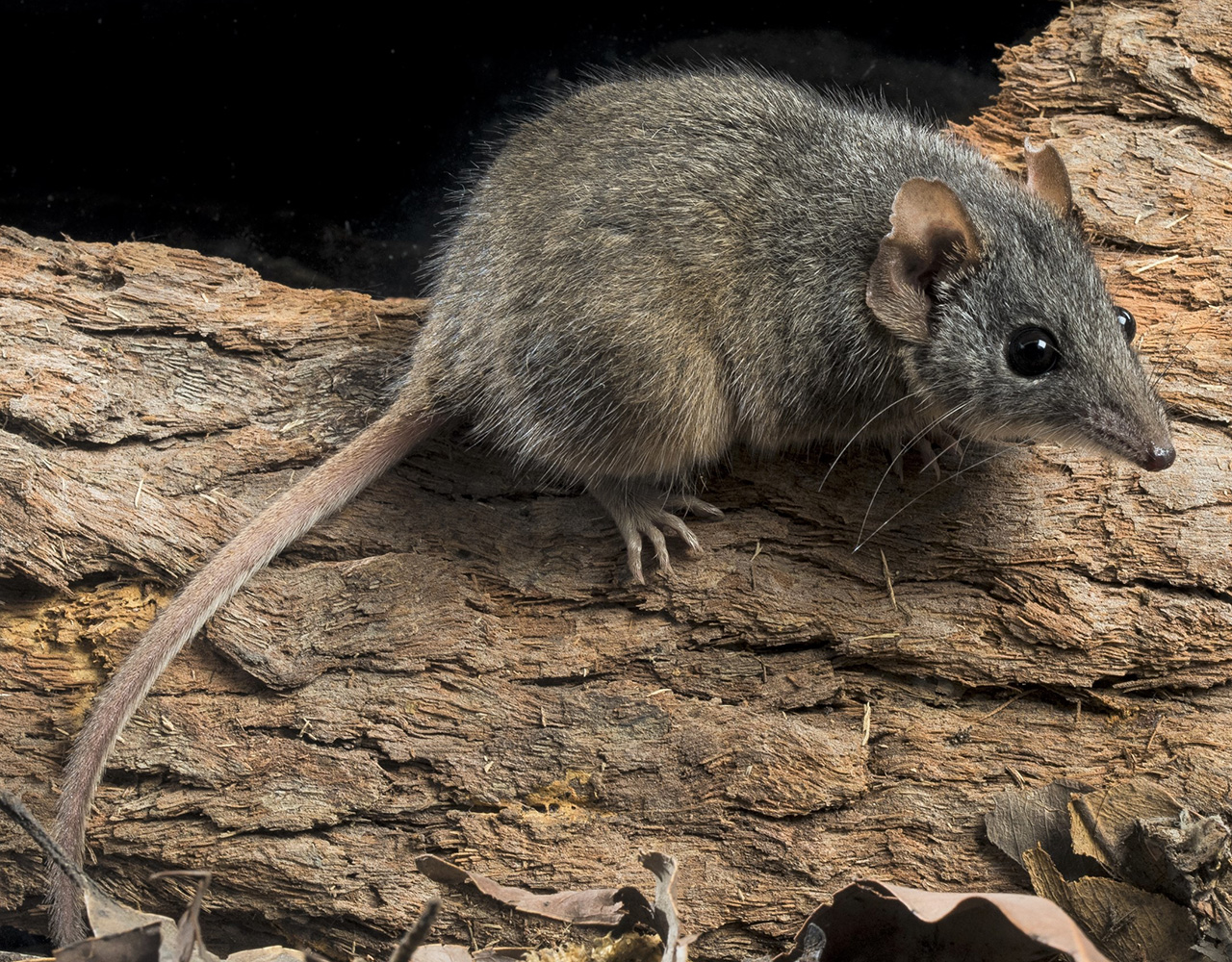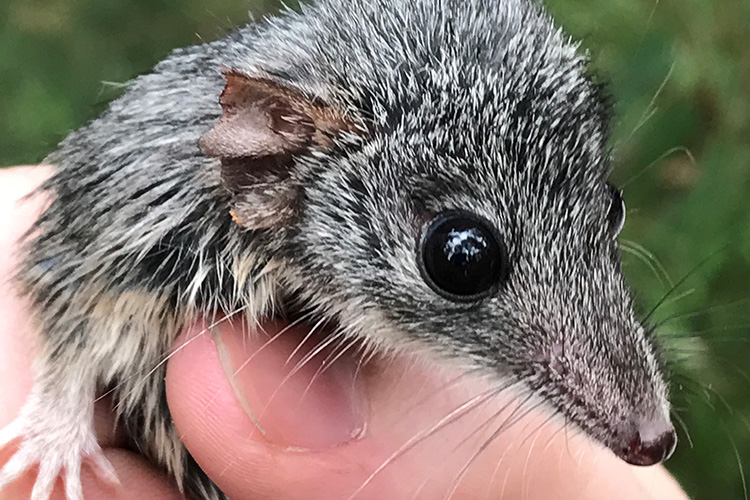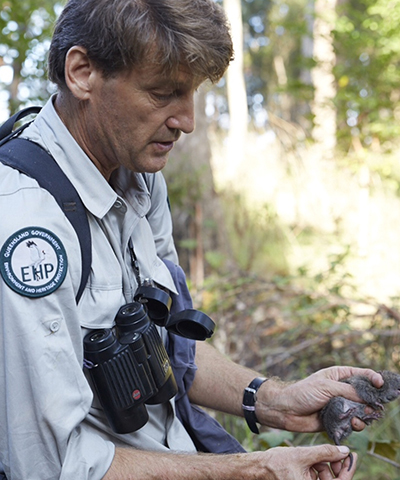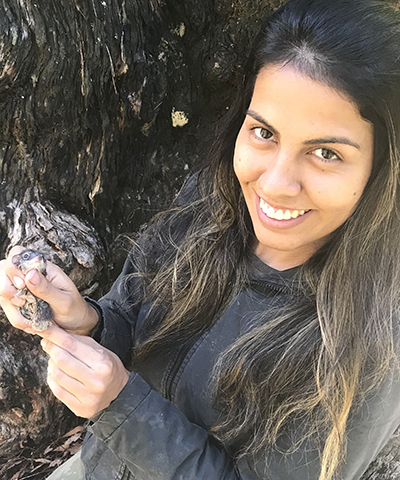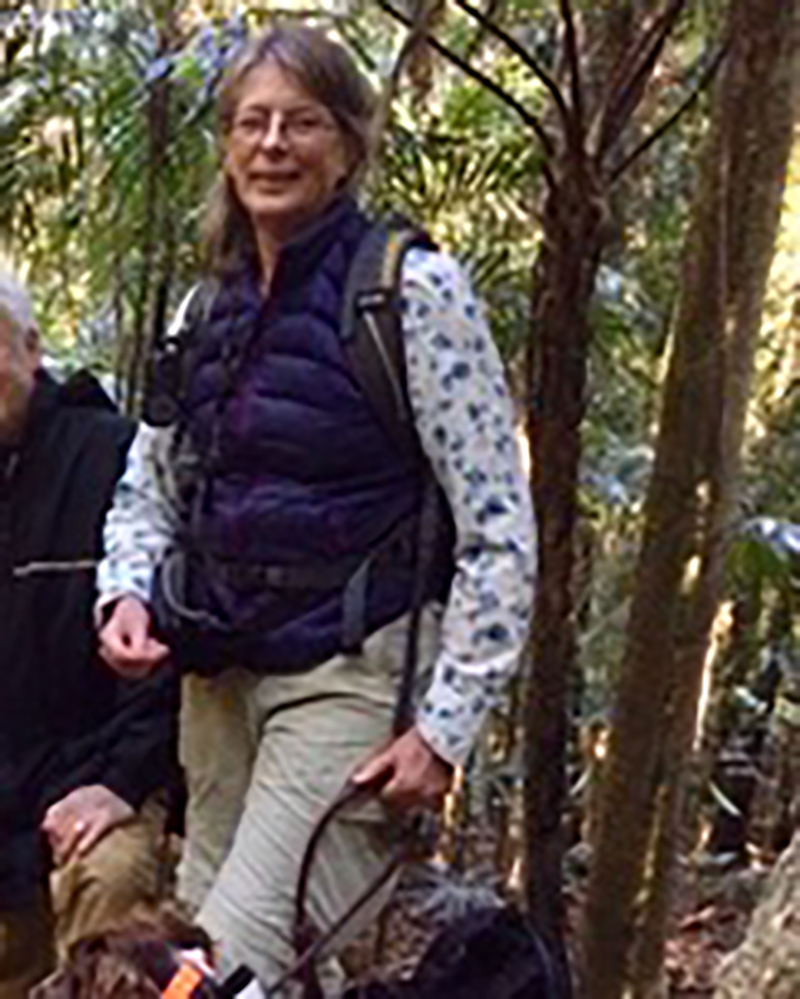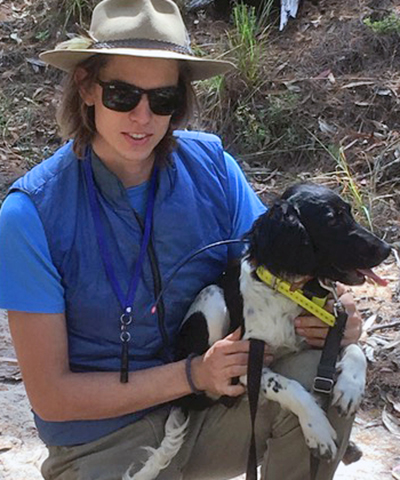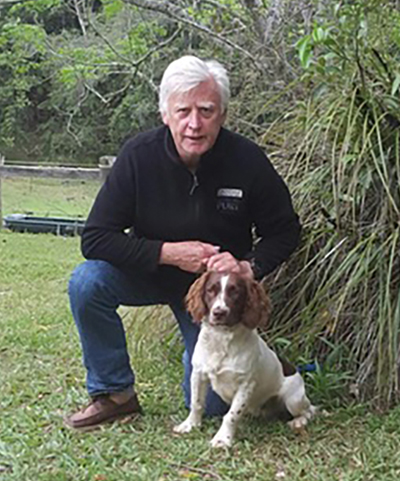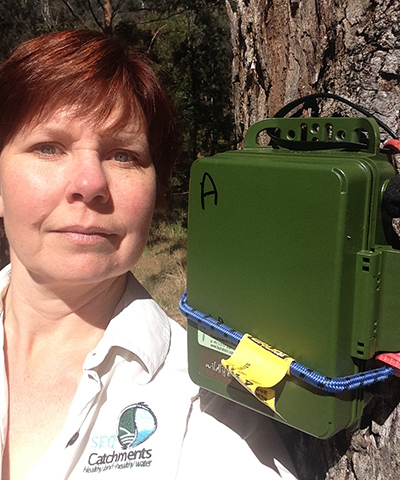
Project: 4.4.11
Using detection dog techniques to conserve Queensland’s Endangered montane species
Project Leaders: Diana Fisher , Andrew Baker
Research in Brief
Three Endangered species survive only in tiny populations in small areas of particular mountain ranges in Queensland: two mammals ranked in the top 20 Australian mammals most likely to go extinct (the carnivorous marsupials black-tailed dusky antechinus (Antechinus arktos), and silver-headed antechinus (Antechinus argentus) and a priority plant, the Bulburin macadamia nut tree (also called Bulburin nut).
This project will use detection dogs together with other search methods to systematically survey all forest types throughout mountains where these Endangered species have been detected or are suspected to occur in order to establish locations of surviving populations, their vegetation types, fire histories, elevational ranges and climate change vulnerability.

A silver-headed antechinus (Antechinus argentus), Blackdown, Queensland. Image: Andrew Baker
Why is the research needed?
All three species are likely to be habitat specialists in terms of vegetation type and tolerance to fire, given their highly restricted known distributions. Determining the range of habitats where these species can and do occur is crucial to their conservation, particularly as climate change appears to be forcing them up-slope into increasingly smaller mountain-top ranges.
The distribution and extent of suitable habitat supporting A. arktos and A. argentus are poorly known, as these species are newly-described and difficult to survey with traditional methods. However, recent pilot studies by project leaders Baker, Hines, Gynther and Nesbitt using detection dogs have confirmed that this technique is effective at the antechinus species’ most active time of year (approaching the breeding season).
Furthermore, an important remnant population of the Endangered priority mammal the northern quoll, Dasyurus hallucatus also occurs in one of the same protected areas as A. argentus and may depend on low fire frequency to retain logs for dens.

Detection dog following an odour. Image: Lynn Baker
How will the research help?
This project will provide immediate and precise data to DES (Qld) and NPWS (NSW) on which to base management actions. We expect to locate new populations and potentially new habitat types used by the Endangered carnivorous marsupials and possibly more individuals of the macadamia.
Any new populations would provide critical information, as these species have very restricted ranges and high extinction risks. Recovery plans for the Bulburin nut tree and the northern quoll state that fire management recommendations are important.
Currently, A. arktos is known only from high elevation temperate rainforest, but it may still occur in fire-prone habitats such as montane heath, where it was recorded historically, and the fire management needs of A. argentus are unclear. The antechinuses and macadamia also appear to have climate-related lower elevation limits, which we will clarify. We will find elevational, climate and fire history / vegetation succession-related range limits and compare these with historical distributions from museum specimens / past records. The stakeholders in the conservation of A. arktos and A. argentus are partners on this project and are already heavily involved in surveys and management.
The present funding will support the first 18 month component of a PhD student project based at QUT. The later part of the PhD will focus on field testing, assay and development of an antechinus-specific lure, based on pheromones released by females during the breeding period.
What research activities are being undertaken?
This project will use the proven method of trained detection dogs to resolve the distribution of the Endangered montane mammals and assess threats at these sites.
For corroboration, we will also survey using white-flash camera traps for six months, and do short-term trapping using Elliott traps and cage traps. We will place cameras at antechinus locations that we identify using detection dogs and potential quoll habitat at Kroombit. At all Bulburin locations, we will also search systematically for the macadamia.
Project activities include:
- fine-scale maps of the current distribution of the black-tailed dusky antechinus and the silver-headed antechinus;
- assessment of the habitat limits and preferences of the black-tailed dusky antechinus, silver-headed antechinus, and Bulburin nut tree, clarifying how fire history (including fire absence), vegetation, climate thresholds, and potentially other species detected on cameras (such as feral herbivores, cats) are associated with range limits and elevational distributions;
- refinement of the detection dog method for small mammal conservation;
- detailed recommendations to improve habitat management at particular elevations for conservation of these Endangered species under changing climate and fire frequencies.


A detection dog finds an argentus scent. Image: Lynn Baker
Who is involved?
This project is a collaboration between researchers from The University of Queensland and Queensland University of Technology, the Queensland Department of Environment and Science’s Ecological Assessment Unit and Threatened Species Unit.
Where is the research happening?
The research will take place in seven national parks in Queensland: Springbrook, Lamington, Border Ranges, Kroombit Tops, Blackdown Tableland, Dawes and Bulburin.
When is the research happening?
The project runs from 2019 to June 2021.
Further Information
For more information please contact:
Diana Fisher - d.fisher@uq.edu.au
Top image: A black-tailed dusky antechinus (Antechinus arktos), Springbrook, Queensland. Image: Andrew Baker
